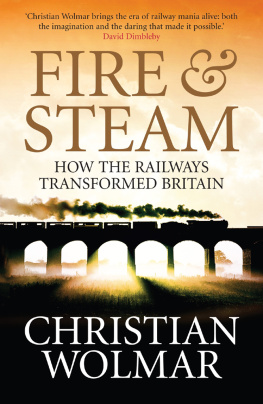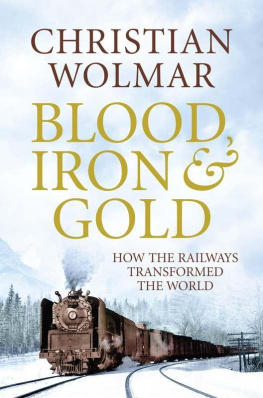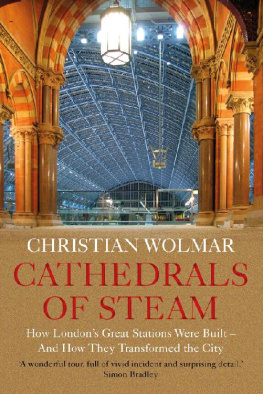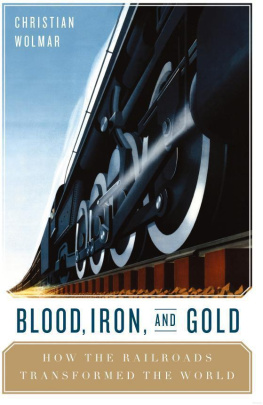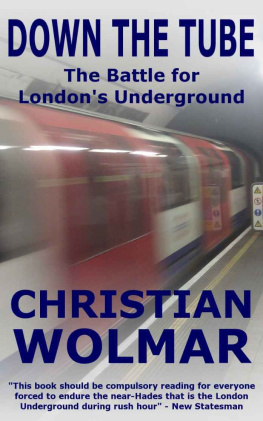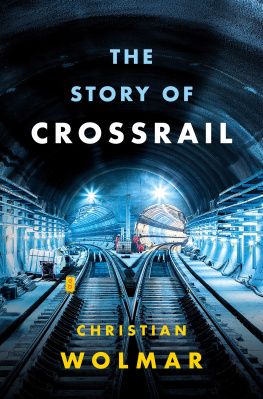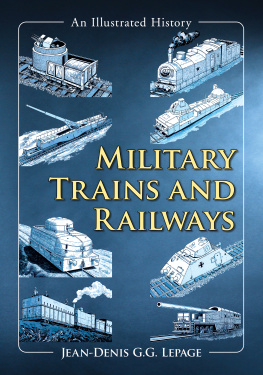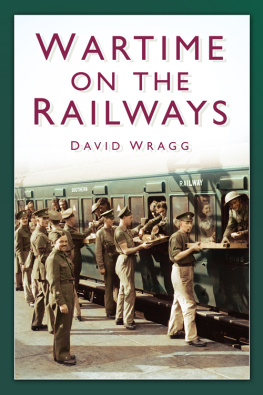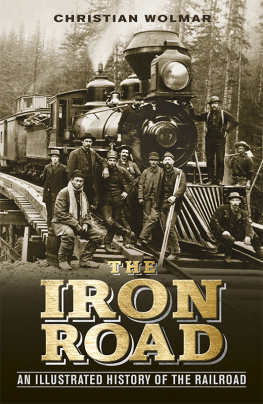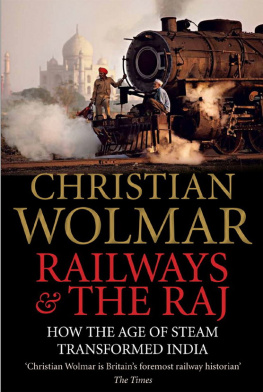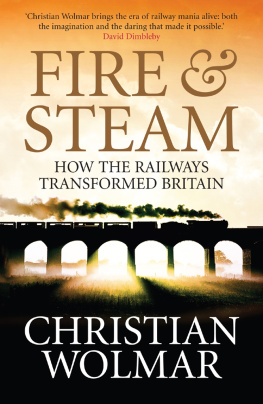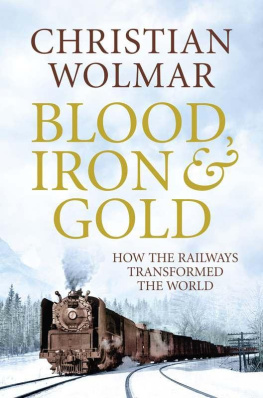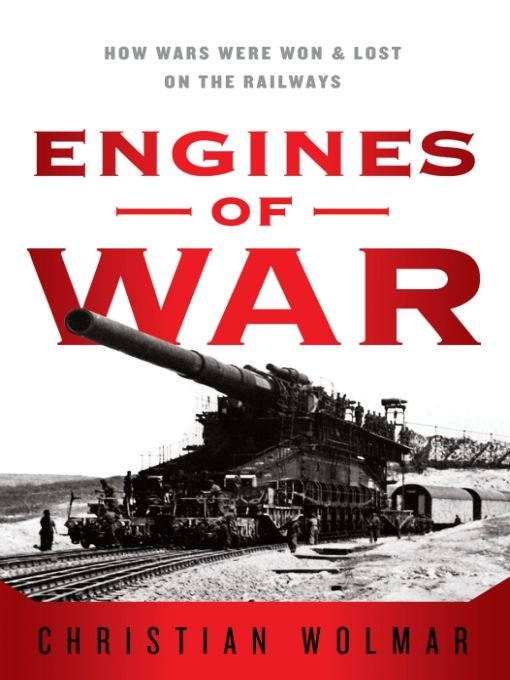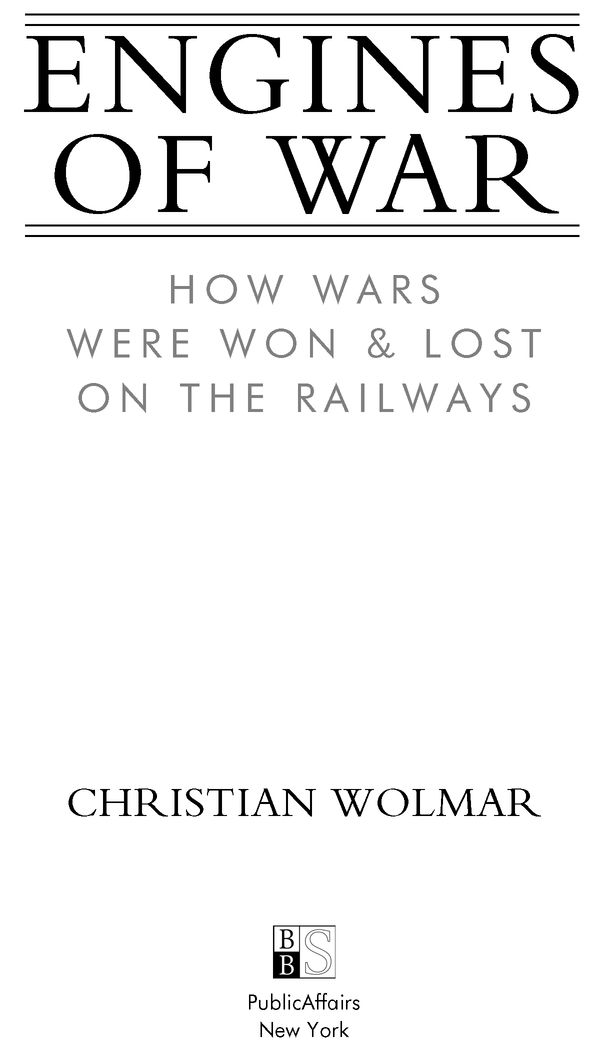Table of Contents
ALSO BY CHRISTIAN WOLMAR
Blood, Iron & Gold
Fire & Steam
The Subterranean Railway
On the Wrong Line
Down the Tube
Broken Rails
Forgotten Children
Stagecoach
The Great Railway Disaster
Dedicated to my daughter Misha MccGwire, to help her history studies, and in memory of Terry Brooks, the grandfather of my daughter Molly Brooks, who suffered on the Burma-Siam Railway.
PREFACE
While writing my previous book, Blood, Iron & Gold: How Railways Transformed the World, I stumbled upon the role of railways in war and saw that this had been greatly underplayed by historians, even those interested in railways. Researching this book, I realized that even my initial thoughts on the subject fell far short of the mark. The railways, I discovered, were as integral to the development of methods of warfare as they were to the numerous aspects of modern life that I had catalogued in Blood, Iron & Gold.
Most writers on the subject of railways and war of which there have been remarkably few, as can be gleaned from my bibliography have focussed mainly on how the railways coped with the extra demands placed on them, particularly during the two world wars. In this book, however, I have concentrated on what I felt was a far more interesting subject: how the creation of the railways led to a tremendous escalation of the scale of warfare and how increasingly they were used in a strategic way to conduct military operations. Over the course of the nineteenth century, it gradually dawned on military leaders that railways were a crucial weapon in their armoury, and as they exploited this great improvement in their logistics, their ability to amass ever larger and well-equipped armies increased exponentially. A recurring theme, which resulted from the growing military use of the railways during this century, was the constant tension between railway managers and military leaders who were often unable to understand that the iron road could not just be subjected to their whims. Railways, right from their beginnings, were used by governments to transport troops quickly in order to quell internal riots or uprisings and consequently the railway companies, unwittingly or not, became agents of the state at a very early stage in the history of the railways.
There was another, indirect, way in which the railways contributed to the escalation in the scale of warfare. As the tracks expanded across countries, they became a unifying force for nations, which in turn made conflict between them more likely since unification helped foment nationalistic feelings. The strong economic stimulus resulting from the creation of the railways also encouraged expansion and consequently aggressive intent towards neighbouring countries. Moreover, richer societies were able to devote more resources to waging war and building up their defensive and offensive capacities. Railways also enabled colonial powers to establish greater dominance over the countries in their possession, sometimes, as we shall see, with the result that the eventual rebellions were ultimately stronger. All these themes are explored in the book.
I have tried to make Engines of War as international as possible, examining a wide variety of conflicts, but inevitably I have had to ignore several wars in which railways played a role, such as, for example, the Mexican revolution and civil war of the 1910s in which the railways were a frequent target. Inevitably, too, the easy accessibility of sources ensures there is a strong focus on Britain and something of a bias towards the British side of conflicts. I have, too, concentrated on the strategic aspects of railways, rather than their use and overuse by passengers at times of war, although this is sometimes referred to. I have also largely focussed on railways in the theatres of war, leaving out much detail about the exploitation of British railways by the government in the wars, partly because this has been better covered in previous books. Since the subject has been little covered by previous authors, there were a lot of potential avenues or rather tracks to explore, but I have tried to home in on facets of the story which best reveal how the role of railways in war has been consistently understated.
This book is set out broadly chronologically, with chapters that for the most part encompass a single war. I start by setting out a very brief assessment of war before the railway age in Chapter One, and the following two chapters cover, respectively, the Crimean War and the American Civil War. The latter is undoubtedly the first genuine railway war, fought by troops delivered to the front by railway and on battlegrounds frequently determined by the location of the train. Chapter Four mainly looks at the Franco-Prussian War, where interestingly the side with the best railways lost, but also examines the wars waged by Prussia in the run-up to that conflict.
In Chapter Five, I look at a motley collection of conflicts which occurred between the Franco-Prussian War and the First World War, including various British colonial wars, such as its victory over Sudan rebels facilitated by the construction of a long railway across the desert, and the Boer War, fought over a single railway line. This chapter also covers the most important and bloodiest war of this period, the Russo-Japanese War, triggered by the construction of the Trans-Siberian Railway. In Chapter Six, I set out the build-up to the First World War, which involved massive investment in the railways across Europe, and assess A. J. P. Taylors famous assertion that the rigidity of railway timetables triggered off the whole war. I devote two chapters to the First World War, in which railways played a significant part in virtually every theatre of that conflict. I analyse in depth the initial phases of the war, in which the railways played a crucial role and effectively determined the location of the front line. I consider the paradox that it was the increased mobility afforded by the railways which led to the stalemate lasting three and a half years on the Western Front, while the relative lack of railways in the east resulted in a less static war. I examine all aspects of the use of the railways, ranging from the often underestimated role of the light railways in delivering material to the front line as well as the far more famous attacks by Arab forces led by T. E. Lawrence on the Hejaz Railway on the Arabian peninsula.
While it might have been expected that railways would have played a lesser role in the Second World War given the technological changes in the intervening quarter of a century, this turned out not to be the case. I examine the reasons for this, and focus particularly on the German invasion of Russia, where the logistics were fundamental to the outcome. Finally, in Chapter Ten, I set out a few surprising and more recent aspects of railway warfare, notably the difficulties the Americans found in destroying the North Koreans railway supply lines and the remarkable story of the Russian missile trains which carried weapons capable of blowing up American cities. And I finish by trying to draw out a few of the recurring themes of the book.
While I have made no attempt to give a comprehensive account of each war, I have attempted to set out the basic facts of each conflict to facilitate discussion of the role of the railways. Obviously, given the need to keep this book to a manageable length, it has been impossible to include great detail but I have tried, at least, to outline the cause of each war, the key battles and the outcome.


